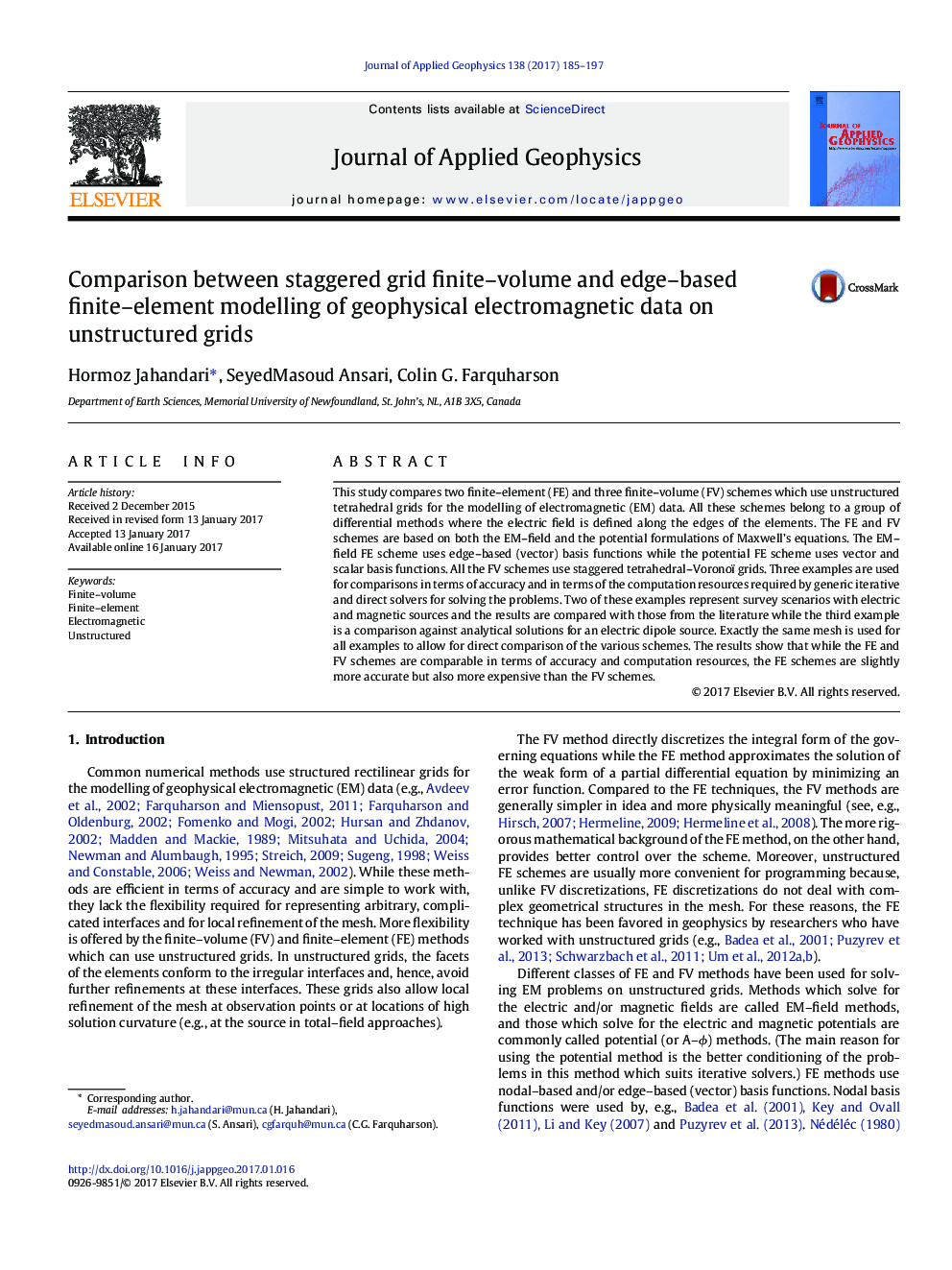| Article ID | Journal | Published Year | Pages | File Type |
|---|---|---|---|---|
| 5787211 | Journal of Applied Geophysics | 2017 | 13 Pages |
â¢Two finite-element and three finite-volume schemes for the modelling of geophysical electromagnetic data are compared.â¢The FE schemes use tetrahedral grids and the FV schemes use staggered tetrahedral-Voronoï grids.â¢The FE schemes are slightly more accurate but also more expensive than the FV schemes.
This study compares two finite-element (FE) and three finite-volume (FV) schemes which use unstructured tetrahedral grids for the modelling of electromagnetic (EM) data. All these schemes belong to a group of differential methods where the electric field is defined along the edges of the elements. The FE and FV schemes are based on both the EM-field and the potential formulations of Maxwell's equations. The EM-field FE scheme uses edge-based (vector) basis functions while the potential FE scheme uses vector and scalar basis functions. All the FV schemes use staggered tetrahedral-Voronoï grids. Three examples are used for comparisons in terms of accuracy and in terms of the computation resources required by generic iterative and direct solvers for solving the problems. Two of these examples represent survey scenarios with electric and magnetic sources and the results are compared with those from the literature while the third example is a comparison against analytical solutions for an electric dipole source. Exactly the same mesh is used for all examples to allow for direct comparison of the various schemes. The results show that while the FE and FV schemes are comparable in terms of accuracy and computation resources, the FE schemes are slightly more accurate but also more expensive than the FV schemes.
